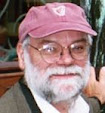State of the Irish Language
I'm no expert on the state of the Irish language, Gaeilge, but I am very engaged with the language and I read a lot about it. I’ve been studying Irish since about 2005 with a small study group that, until the Covid pandemic, met every Wednesday night at the East Side Irish-American Club in Euclid, Ohio.
Irish is spoken as an every-day community language in the Gaeltachts, Irish -speaking areas mostly in the west of Ireland. They are located in Counties Donegal (very strong Gaeltacht), Mayo, Galway (very strong), the Aran Islands (very strong), the Dingle Peninsula in County Kerry (strong area), small areas in County Cork, and a couple other places, Counties Waterford and Meath. The Gaeltachts get state subsidies to support the language, but they are not protected ghettoes. Non-speakers can move in and fluent speakers can move out. In theory an area could lose its status as a Gaeltacht. For a nice overview of Ireland's Gaeltachts, check out the Wikipedia entry: https://en.m.wikipedia.org/wiki/Gaeltacht
So maybe 100,000 Irish speakers are in the Gaeltachts (of the 4+ million residents of the Republic). But many people outside these areas can speak, read, and understand Irish, to varying degrees. It's said that about a million people in Ireland have competence in Irish. Even that's not the whole story. Almost everyone in the country, in the Republic of Ireland at least, knows some Irish. It's really part of the everyday language, Hiberno-English (https://en.m.wikipedia.org/wiki/Hiberno-English). Also, almost all children study Irish in the schools. More on that in a minute.
So even if the number of Irish speakers in the Gaeltachts is decreasing, there is still hope and lots of energy for the language. There are six Celtic languages: Welsh, Breton (in Brittany, Northwestern France), Cornish (Cornwall, England); and the Gaelic-type: Manx Gaelic, Scottish Gaelic (Gàidhlig), and Irish (Gaeilge). The one doing best right now is Welsh, with Irish the runner-up.
Much of that energy is generated in the gaelscoil, Irish language schools that instruct children in Irish, basically immerse them in Irish. These are prized and honored schools, and there’s competition to get a place in one of them. They are located all throughout the Republic of Ireland and serve about 50,000 children in some 200 schools. The Wikipedia article on the Gaelscoil is here: https://en.wikipedia.org/wiki/Gaelscoil There are also Irish-language schools in Northern Ireland, believe it or not.
Besides the instruction in the Gaeltachts and Gaelscoil, there are language programs in various parts of the country where children (and older students) can go for Irish instruction via immersion for various periods of time (from weekends to weeks or months). These schools are often in the Gaeltacht regions, but there are some held in the USA and Canada.
Irish Language College Programs.
There are programs in American and Canadian colleges. The University of Notre Dame in Indiana has a very good program, but you have to be a Notre Dame student to participate, and that is expensive. There are Irish study programs all over the USA and Canada: https://www.irishcentral.com/culture/education/the-definitive-list-of-irish-studies-programs-united-states-and-canada
There are many free resources and at least one free college program. The internet is now full of Irish language resources. The greatest resource is free! It is the great Irish and Irish-English dictionaries offered by www.teanglann.ie. This resource can be accessed by any computer and it is fully downloadable for free to smartphones. I use it every day. It even has a function that pronounces words in the three major dialects.
The free college courses that I know about are offered by Dublin City University: https://www.futurelearn.com/courses/irish-language
There are other sources that people use to study Irish, including Duolingo, Rosetta Stone, and many others. You can also get books with tapes, cd’s, or online audio. A good way is to find a group led by a competent teacher. Cleveland, Ohio has at least two, one on the East Side and one on the West Side. Daltaí Gaeilge (“Students of Irish”) has some of these resources: http://www.daltai.com/classes/ There are probably classes in Montana, Washington, and Oregon, maybe even in Portland. The "daltai" website might tell you.
Conclusion.
Despite the decline in everyday Irish use in the Gaeltachts of Ireland, Irish is actually flourishing in other areas. What is really hopeful is all the popular culture Irish activity, including radio (RTE), television (TG4), TikTok, Twitter, and so on. Gaeilge Abu!
Postscript.
Irish is an Indo-European language like most of the languages spoken in Europe and like many languages spoken in Asia (Persian, Hindi, Russian). But it does feel very different than, say, German or Spanish or Italian. The word order is a bit unfamiliar (Verb-Subject-Object); there’s a tendency to use what we call in formal English “sentence fragments”; there is no one-to-one correspondence between letters and sounds (the phonological rules are daunting at first).
It’s hard to learn Irish on your own. At some point to achieve fluency you need an immersion experience.
Irish has a very rich literature, but physical books are still hard to come by in American bookstores and even Amazon.com. Books can be shipped from Irish bookstores (like Kennys Bookshop in Galway (www.Kennys.ie) or www.Litriocht.com), but it’s expensive. Sometimes Irish books are available as e-books or can be borrowed from big American libraries (the Cleveland Public Library comes to mind).
A heartening thing about Irish is that many immigrants from all over the world are becoming fluent, including People of Color, and many from Eastern Europe. Their fluency almost shames some native-born Irish who don't even know their country's language very well. There's a great short movie that illustrates this issue, "Yu Ming Is Ainm Dom," which translates “My Name Is Yu Ming.” It is available on YouTube and has English subtitles: https://youtu.be/JqYtG9BNhfM. This film is about 13 minutes long and is very funny.
Bob Coughlin / April 28, 2021

